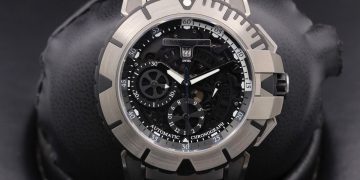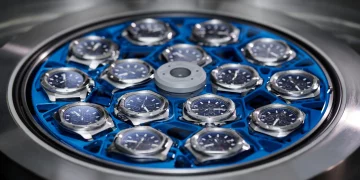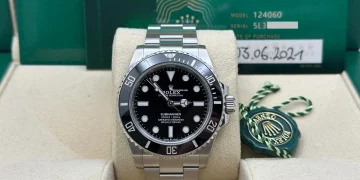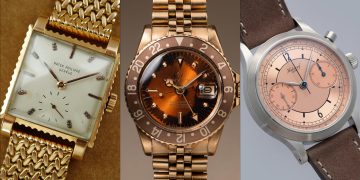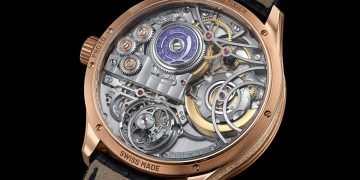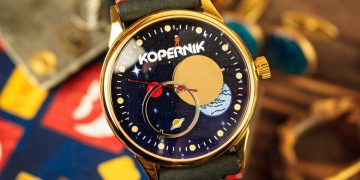Luxury watches have long been associated with more than just timekeeping; they are symbols of status, power, and personal relationships. However, in rare cases, these coveted timepieces transcend their material value and become involved in far more complex, emotional stories. One of the most intriguing and scandalous examples of this is the tale of a royal timepiece that allegedly played a central role in a high-profile divorce. This is the story of how a luxury watch became an unexpected piece of evidence in the unraveling of a marriage, sparking media frenzy and public intrigue. But how exactly did a watch come to symbolize such deep personal turmoil? In exploring this scandal, we will uncover the powerful symbolism of watches in relationships and examine why a luxury watch can hold more meaning than just its function.
The Watch That Shattered a Royal Marriage
In the world of high society, luxury watches are not just accessories—they are prized possessions, passed down through generations, and often presented as gifts in moments of significance. It was a royal watch, however, that became the center of one of the most famous breakups in modern history, involving a couple whose relationship had been closely watched by the public for years.
The watch in question was a limited-edition timepiece given as a gift to a royal spouse during the honeymoon phase of their marriage. The luxury brand in question, known for its bespoke craftsmanship and exclusivity, had created a watch that was a true symbol of both romance and commitment. However, over time, the watch became a source of tension, carrying far more emotional weight than its monetary value could ever suggest.
In this case, the watch was gifted in celebration of the couple’s union, with the expectation that it would symbolize the eternal bond between them. Over the years, however, the watch began to take on a different meaning. As cracks began to form in the marriage, the watch came to represent the growing divide between the partners. Allegedly, it was during a heated argument about the watch that the marriage reached its breaking point, with one partner insisting that the other had neglected the symbolic gift and, by extension, the promises that it represented. This was not merely an argument over an expensive object, but a reflection of the deeper emotional and relational issues that were already festering.
The Symbolism of Watches in Relationships
Watches, particularly luxury timepieces, hold a profound symbolism in relationships. They represent more than just time—they are gifts, tokens of affection, and markers of milestones. They can symbolize the passage of time, the fleeting nature of life, or even the permanence of love and commitment. In the case of the royal couple, the watch was more than just an expensive accessory; it was a physical manifestation of their vows to each other.
Watches are often given to mark special occasions, such as engagements, weddings, or anniversaries. These gifts carry with them the weight of promises made, and as time passes, the watch becomes intertwined with the memories of that commitment. As a result, when a relationship begins to unravel, these objects take on an even greater significance. They can represent not only the highs of the relationship, but also the cracks and eventual dissolution.
In many ways, the watch symbolizes the notion of “time,” a concept that is crucial in the context of romantic relationships. Just as time can heal wounds, it can also expose them. Watches often become markers of important moments—whether joyful or painful—and their presence or absence can reveal the state of the relationship itself.
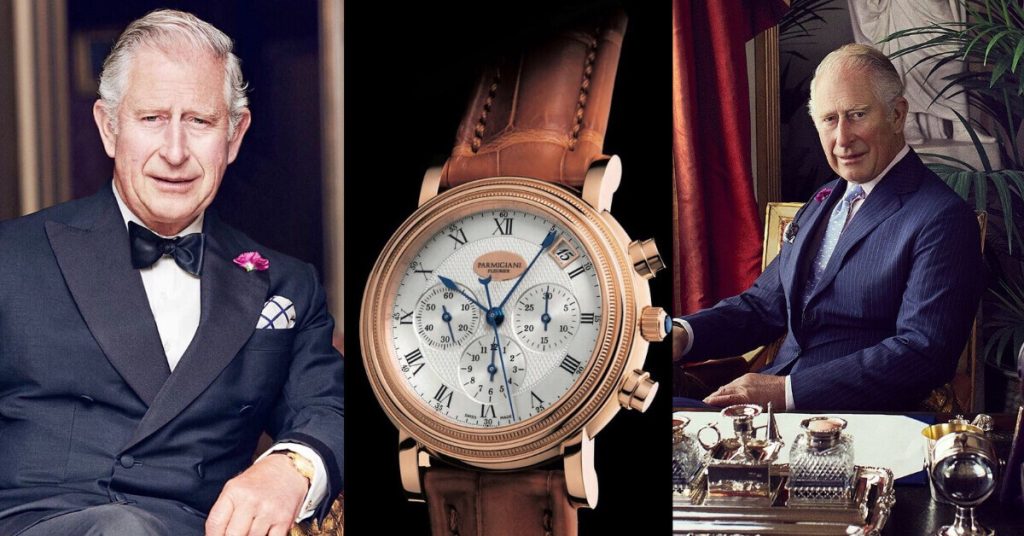
The Role of the Watch in the Breakdown of the Marriage
As the couple’s relationship began to deteriorate, the watch, once a symbol of their love, transformed into a focal point for the growing conflict between them. One partner reportedly grew increasingly frustrated with the other’s behavior towards the watch. Neglecting the watch—leaving it unworn, unappreciated, or even mishandling it—was seen as an emotional betrayal. The emotional weight attached to the timepiece was so great that it became a proxy for the lack of attention, respect, and care that the partners were showing each other.
This, in turn, fueled an already volatile situation. The watch, in this context, was no longer just an accessory or a gift; it had become a symbol of neglect, of broken promises, and of a relationship that was no longer functioning as it once had. The very idea of the watch had become so charged with negative emotions that it became an irreconcilable point of contention between the couple.
The situation escalated when the watch was reportedly thrown into the argument, with one partner accusing the other of not caring about it—or, by extension, not caring about them. The watch, once a symbol of love, now represented the heartache, disappointment, and emotional distance that had come to define the relationship. What started as a loving gift had become a burden, a reminder of everything that had gone wrong.
The Psychological Impact of Luxury Timepieces in Relationships
The role of luxury timepieces in relationships cannot be underestimated. When someone gives a luxury watch as a gift, they are offering much more than an object. They are offering a symbol of their affection, devotion, and long-term commitment. The recipient is not just receiving a timepiece; they are receiving a message—one that speaks to their worth, their place in the giver’s life, and the bond they share.
In the case of the royal couple, the watch held a deep psychological significance. It was meant to be a constant reminder of the love and commitment they shared. However, as time went on, the watch took on a different psychological meaning. Instead of representing eternal love, it became a symbol of everything that had gone wrong. The very presence of the watch reminded the couple of their emotional distance, their broken promises, and their inability to reconcile their differences.
The psychological weight of such an object in a relationship cannot be underestimated. A luxury watch, in particular, has a powerful presence. It is an expensive, often rare, object that commands attention. When it is given in a romantic context, it becomes a symbol of exclusivity and commitment. However, when that relationship begins to fray, the watch can take on a different role. It can transform into a reminder of lost affection, missed opportunities, and broken promises. For the couple in question, the watch went from being a cherished memento to an unwelcome symbol of their relationship’s decline.
The Media Frenzy: A Watch and a Royal Divorce
The story of the watch became a media sensation, with tabloids and news outlets obsessively covering every detail of the royal divorce. The watch, once a private and intimate symbol, was thrust into the public eye. It became a piece of evidence, a symbol of the emotional rupture between the couple, and a focal point for public speculation. The media portrayal of the watch as a catalyst for the divorce only heightened its significance. The watch was no longer just a gift; it had become an icon of the breakdown of a marriage, a visual representation of a relationship that had turned sour.
The media frenzy surrounding the watch also underscored the role that public perception plays in romantic relationships—especially those under the scrutiny of the public eye. In high-profile relationships, every detail is often examined, dissected, and scrutinized. A seemingly insignificant object, like a watch, can take on enormous meaning in this context. The watch became the physical manifestation of the couple’s problems, a symbol of the distance that had grown between them. It wasn’t just the object that had been neglected—it was the relationship itself.
Could the Watch Have Saved the Marriage?
The question remains: could the watch have saved the marriage? In hindsight, it’s clear that the watch, in all its symbolism, could never have been the source of the problem. The watch was a reflection of the relationship’s deeper issues, a manifestation of the lack of emotional connection and the growing divide between the partners. Ultimately, no object—no matter how valuable—can repair the fundamental issues in a relationship.
Perhaps, in some ways, the watch’s role in the divorce serves as a cautionary tale about the importance of maintaining emotional connection and respect in relationships. Material objects, no matter how beautiful or significant, cannot replace the need for understanding, communication, and mutual care.
Conclusion: The Power of Watches in Relationships
The story of the royal timepiece that allegedly caused a divorce highlights the powerful symbolism that luxury watches can hold in relationships. A watch is not just a timekeeping device; it is a reflection of the bonds we share with others. It can symbolize love, commitment, and shared moments. However, as this story illustrates, when a relationship begins to falter, even the most treasured objects can become fraught with emotional significance. A luxury watch may be a beautiful gift, but it cannot replace the emotional foundation that holds a relationship together.
This tale serves as a reminder of the profound role that symbolism plays in our lives. Objects like watches, which may seem insignificant on the surface, can carry with them deep emotional and psychological weight. And when those objects are tied to relationships—particularly romantic ones—their meaning can evolve in unexpected ways.



